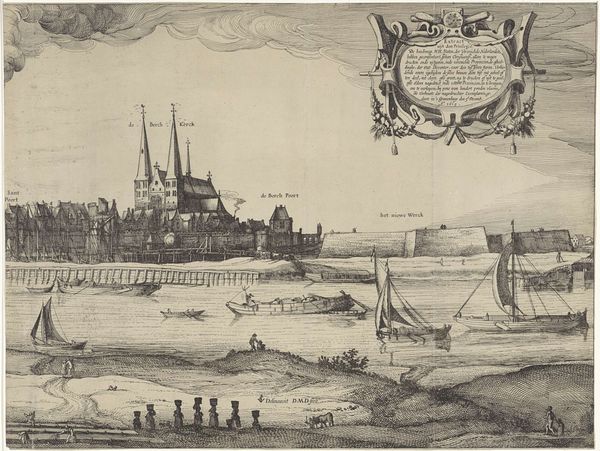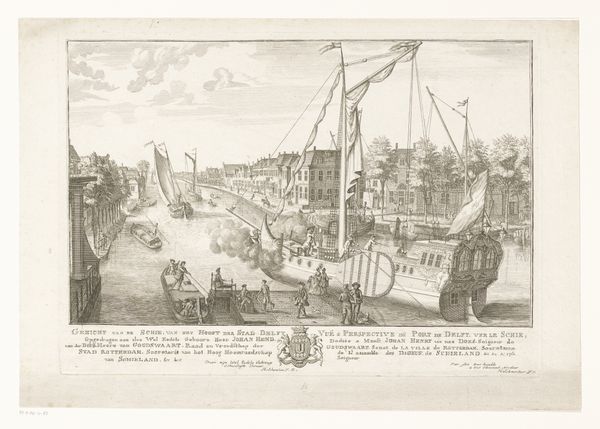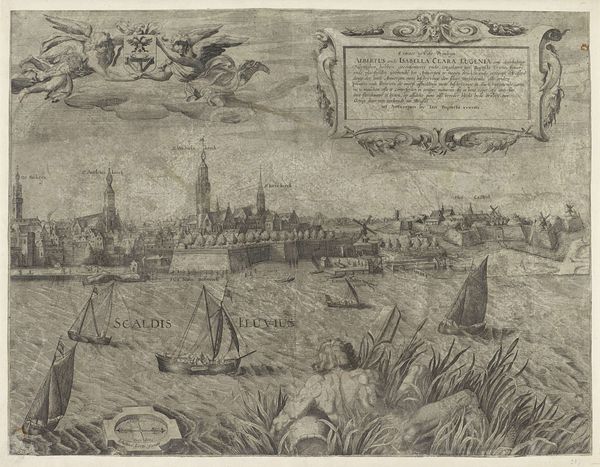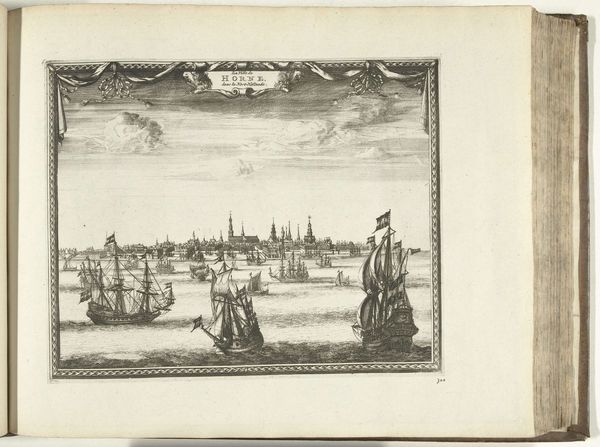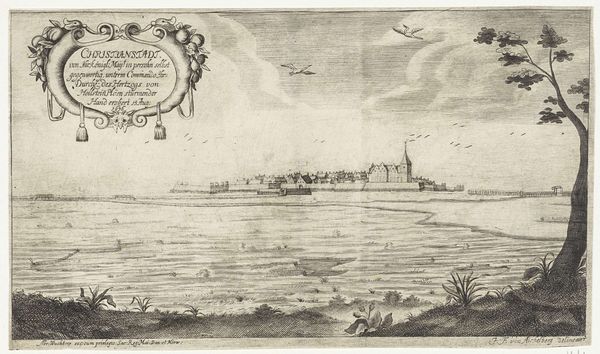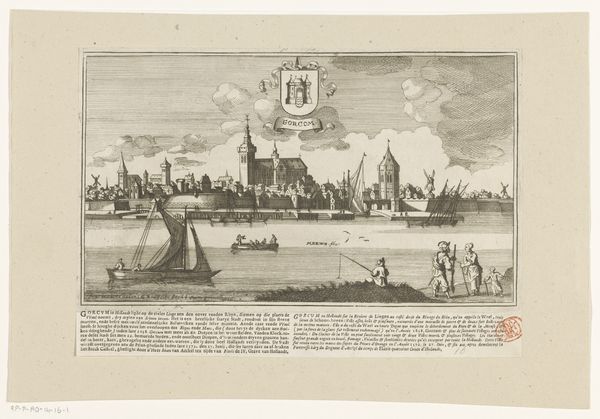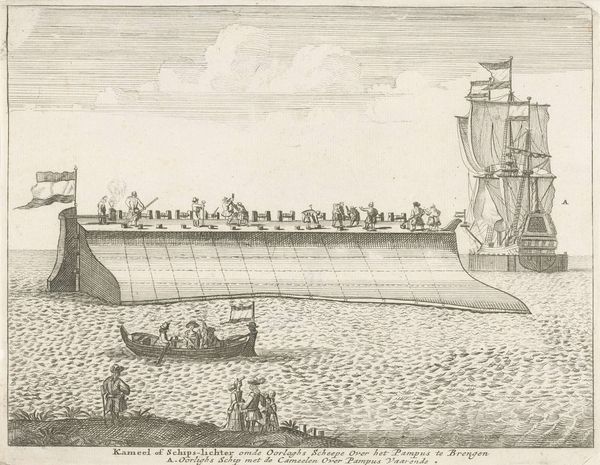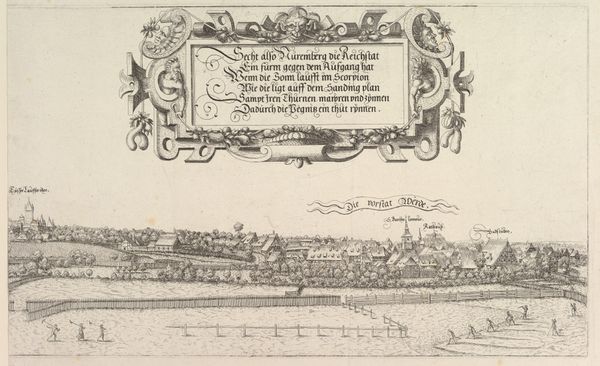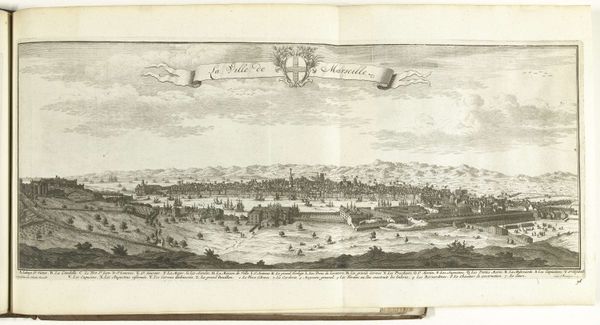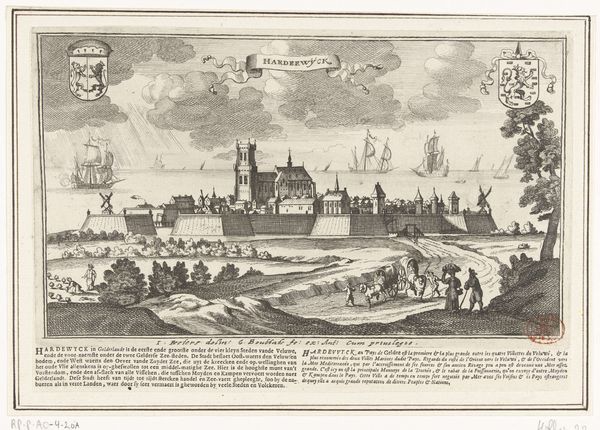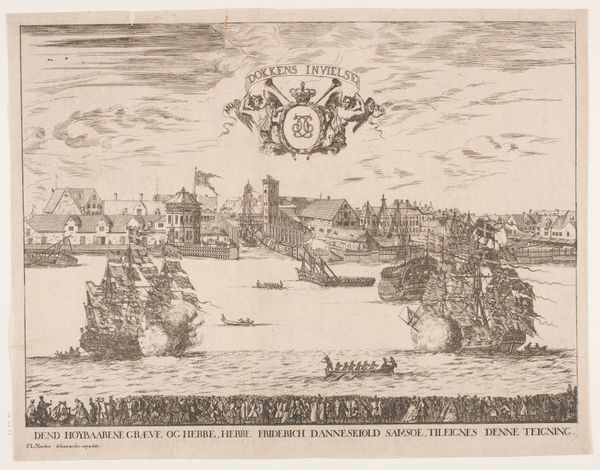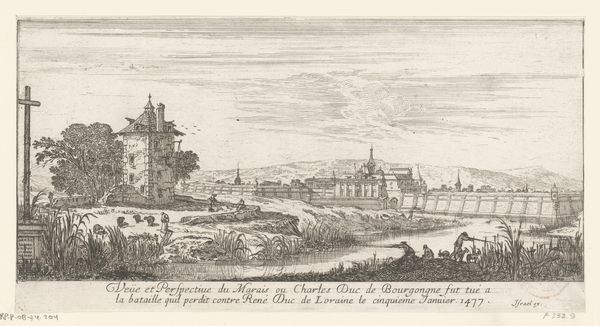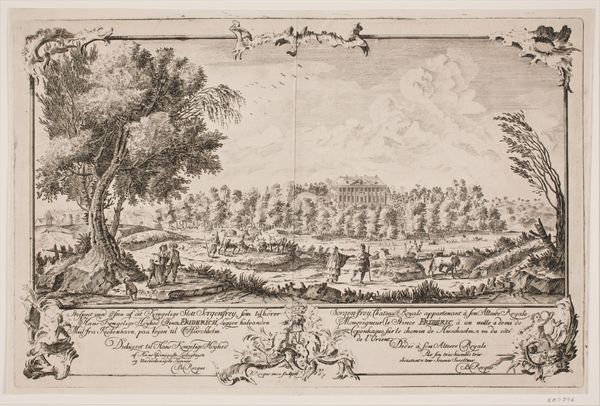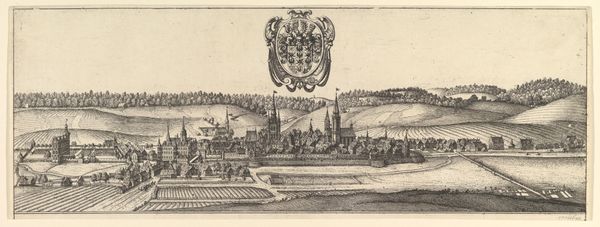
print, etching
#
baroque
# print
#
etching
#
perspective
#
cityscape
Dimensions: 115 mm (height) x 488 mm (width) (bladmaal)
Curator: What strikes me about this cityscape is the artist’s effort to meticulously capture Tallinn—or Reval as it was then known—around the 1650s, during the Baroque period. It’s a print, an etching. Editor: It evokes a sense of unease, actually. Despite the meticulous detail, the monochrome palette and tightly rendered figures lend a somewhat dystopian air, almost like a warning rather than a celebration of urban life. Curator: Absolutely, but let’s consider what urban representation meant then. It wasn’t just documentation. It's full of loaded signifiers. These prints circulated widely, becoming tools of civic pride and propaganda. This 'Prospekt af Reval' is not only about *showing* Reval but about projecting its identity, specifically power, stability. Look how the fortress is emphasized. Editor: Exactly. Who gets to define that stability, and at whose expense? This isn’t an objective rendering, is it? There are certainly encoded elements here tied to social and political order. Look at the figures laboring at the margins of the walls and fields. I wonder about their stories. Were they included for verisimilitude or as visual proof of enforced boundaries and limited freedoms? Curator: Both, perhaps. The Baroque aesthetic often used spectacle to reinforce power. The exaggerated perspective that seems to flatten all of the people into indistinct masses only contributes to my perspective. It amplifies the central importance of the architecture, which signifies order and control. The fortress is there, immutable and enduring. Note, as well, the symbolic function of cartouches and banners: these frame and amplify textual content laden with authority. Editor: A frame that effectively erases lived experiences. What about the ecological impact of building this fortress? Or the labor conditions of those whose effort enabled the town's so-called prosperity? History isn't only in stone and proclamations, it is also within those exploited resources and bodies! Curator: Well, true, the silences surrounding those stories speak volumes, right? The choice of etching itself, while allowing for detail, limits expressive tonal ranges. Maybe it was thought the gray tones helped the image convey solemnity or dignity fitting for the subject. Every visual element acts as a symbolic layer, contributing to Reval’s overall crafted representation. Editor: Precisely. That constructed representation also invites questions about agency. Art compels us to reevaluate dominant narratives—to read against the grain—and confront uneasy aspects that have shaped societal foundations. Curator: An interesting reflection. Looking at the piece again through this perspective, it adds yet another dimension to the already complex dialogue. Editor: I’m just hoping this new way of seeing allows us to build towards a more critical engagement with images that often reinforce established hegemonies.
Comments
No comments
Be the first to comment and join the conversation on the ultimate creative platform.
